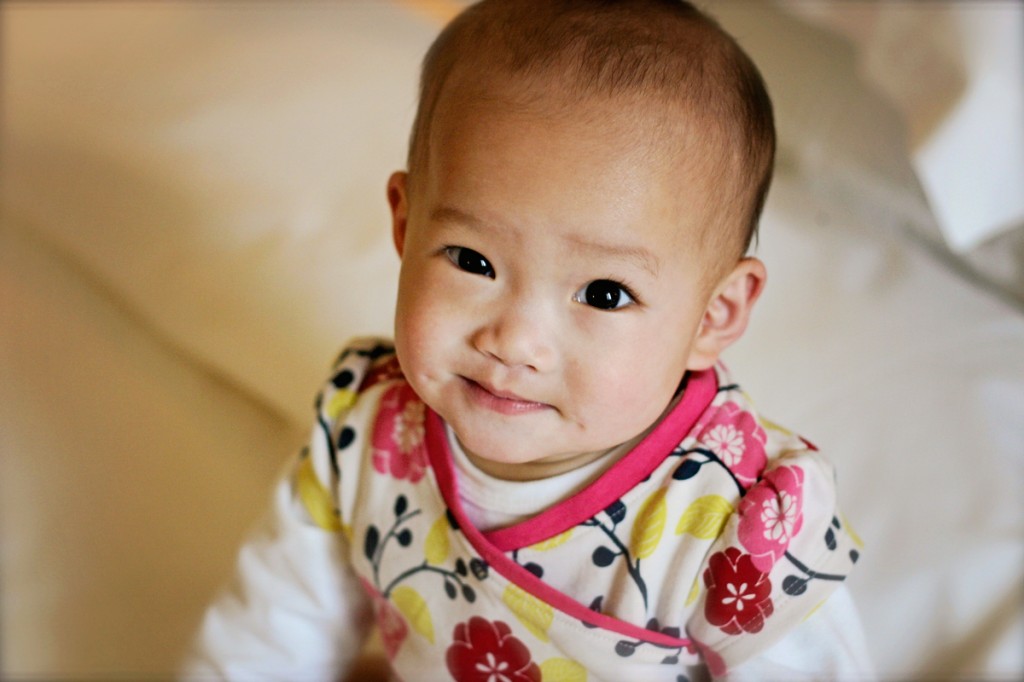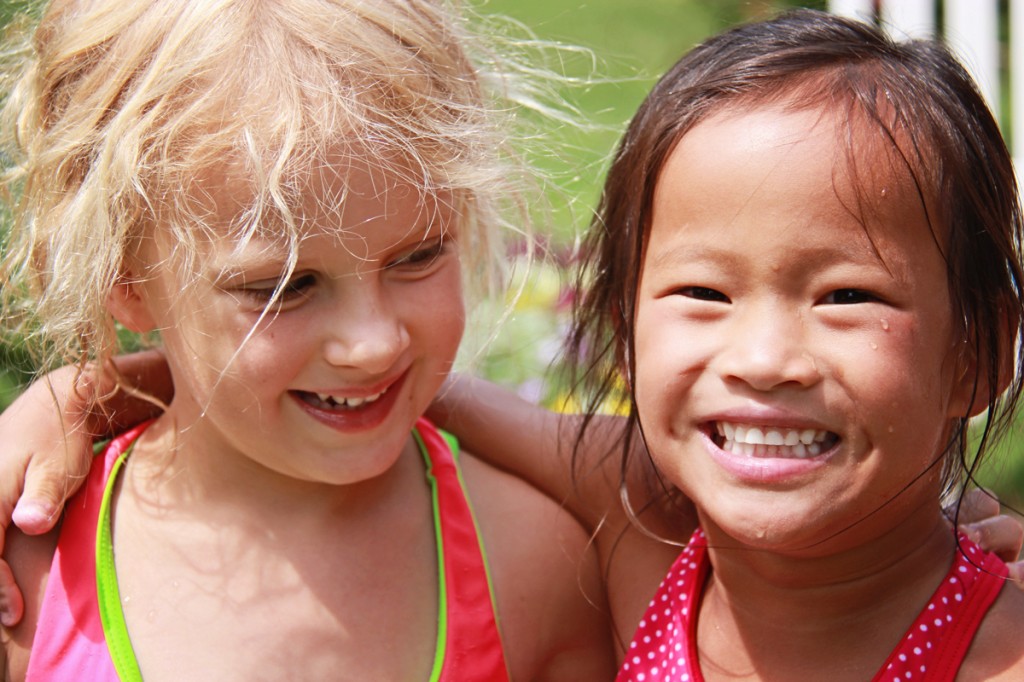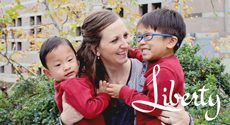We received a surprise gift the day we received our daughter 4 years ago.
Dimples.
Not just any dimples, the most adorable little dimples. The kind that show up even before the smile breaks, giving away that she’s about to lose the staring contest. I love them.
While we got to see them that first day and most everyday since, we didn’t always get to see them for more than a quick glimpse. The hundreds of pictures I took of her in our first months home are a bit deceiving. They capture one split second of a moment; they do not reveal how her gaze directly at me may have only lasted for that split second of a moment. I longed for that closeness of gazing into each other’s eyes as I did while I nursed our other three. But, her loss of that closeness for the first year of her life made her fight it with me. She fought the closeness by looking away a second into the gaze and physically turning her head or whole body away. Her seeming rejection—through eye contact and in other ways—made my attachment process harder which made her attachment process harder which made my attachment process harder…and on and on…you get the idea.
Four years into this adoptive parenting thing and a few years into connecting well, I now know things I wish I had known in those first days to encourage eye contact and move us both towards a better connection. Here are a few…
- Make it easier – It is a whole lot easier for a little person to look at a big person if the big person isn’t so big. I realize that to get better eye contact, I need to come to her, lower myself to her height while not making her feel like I’m all up in her grill.
- Simply touch my nose – the simple movement of me moving my hand towards my face drew her attention and made her look in the right direction without the intimidation of looking up into my eyes on her own. As she looked away while we were interacting, repeating it again brought her back to my face again.
- Use verbal cues – I’m a fan of simple scripts. Saying something every time I need to like, “Lemme see those brown eyes” served as a verbal cue for her that she could expect and depend on and kept me on track when I could have felt more frustrated and spiraled elsewhere.
- Ask a seemingly silly question – I confess that the suggestion of spontaneously asking “What color are your eyes?” seemed odd to me when I first learned about that tool. But, you know what? It totally works. She looks at me; I admire her eyes for a few seconds and then continue speaking while I’ve got her right there with me.
- Guide the glance – without touching her face but using the same motion as if I were, I can direct my daughter gently into eye contact by cupping my hand near her cheek a couple inches from her face. The gentleness of this tool helps us both.
- Be a cheerleader – positive reinforcement goes a long way. When she would look right at me and we’d lock eyes for longer than was natural for her, I cheered her on: “Oh, I like that. Good job looking right into my eyes.”
They’re tools for the toolbox, tools that were my go-tos in some seasons in particular over the last four years. But, there’s nothing magical about them; they don’t “fix things” on their own; there’s no if-then guarantee about them–and I so want if-then guarantees.
But, there was something to the intentionality of using them, the pursuit itself of tools to use and then celebrating little successes that moved us forward.
And, the hope and joy in that forward momentum has been nothing short of life changing for all of us.





























Great tips! We still struggle with this and he has been home just short of three years. Love the tips!!
Amy, I know you have great tips yourself!
Love this! Such great suggestions. I forgot about that initial struggle to get eye contact and how badly we both needed it.
We both definitely needed it!
Awesome! We still deal with this issue in moments of stress or anxiety. Good refresher for me for sure. Sharing wtih my peeps.
Oh, it’s still so helpful to us too in times of stress–for both Lyds and me!
This is excellent Kelly. Simple and helpful. We forget how the simplest things can, over time, affect a significant change. I’ll share this on our Hope at Home Facebook page. Thanks!!
It really does seem like it’s the simple things that move us towards the biggest change!
Hi Kelly,
These are great tips. I also love your blog, by the way. We plan to travel to China next spring for our first adoption, so a lot of this is new to me. I am a teacher and know that children on the autism spectrum can have difficulty with eye contact, does this happen quite often with adopted children then? Is it likely related to their lack of contact/communication during those early months/years in an orphanage setting? Thanks again and please keep the tips coming! 🙂
Laura – congrats on your adoption!!!
Your experience with teaching will be so valuable as you parent your new little one!
Babies are clearly supposed to be in families. The loss of that family and connection has a profound affect on little ones, making a lot of things like eye contact hard. Little ones who have learned to live without a family may have a hard time learning to live in a family. But, intentional parenting focusing on building connection goes a long way and we can be agents of healing in our children’s lives–and they can be in our lives too. 🙂
Love these tips Kelly! Great reminders. I’ll be pinning this to go back to in the (hopefully very) near future!
Come on near future!!!